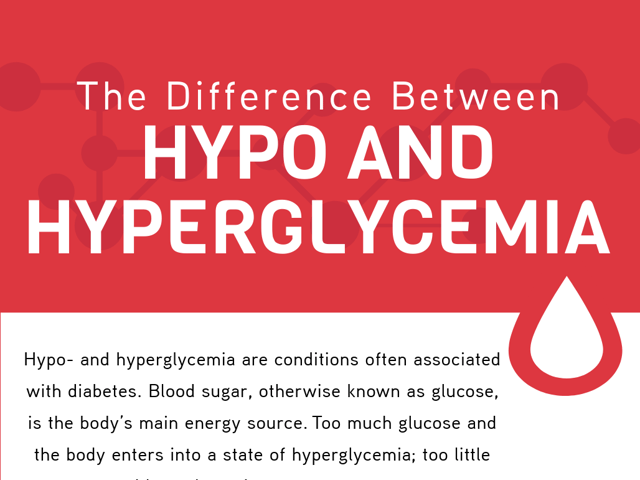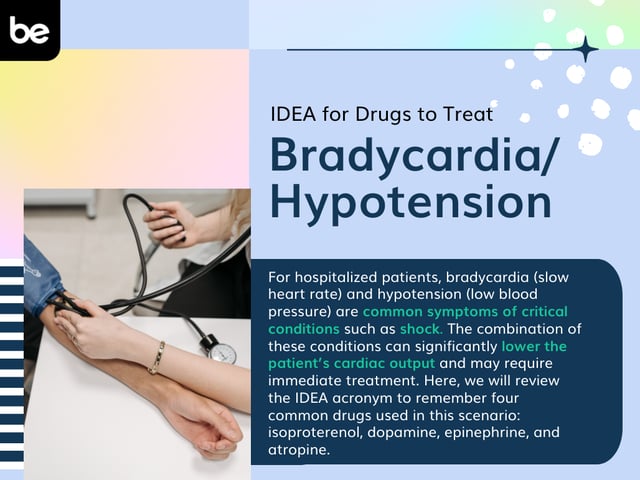
Symptoms of Hypo and Hyperglycemia
Hypo- and hyperglycemia are conditions often associated with diabetes. Blood sugar, otherwise known as glucose, is the body’s main energy source. But like with all good things, moderation is key. Too much glucose and the body enters into a state of hyperglycemia; too little and hypoglycemic symptoms appear.
Hyperglycemia
Hyperglycemia signs and symptoms typically have a gradual onset. Symptoms usually don’t appear until the body’s blood glucose remains significantly high (greater than 180–200 mg/dL) for a long duration. Hyperglycemia has both early and late symptoms. Early symptoms of hyperglycemia include the “3 Ps”: polyuria (frequent urination), polydipsia (increased thirst), and polyphagia (increased appetite). In addition to these classic symptoms, blurred vision, headaches, and fatigue may also appear with early hyperglycemia.
Late hyperglycemia signs and symptoms appear when blood sugars are chronically elevated and hyperglycemia is becoming more serious. Fruity-smelling breath is indicative of the body expelling ketones. Dry mouth, nausea, vomiting, shortness of breath, weakness, and confusion may all be tell-tale signs that hyperglycemia is persistent and coma may be on the horizon if elevated blood sugar is not managed quickly.
Hypoglycemia
Hypoglycemia is more of an acute symptomatic process. When blood glucose levels dip below 70 mg/dL, hypoglycemia signs and symptoms may appear rapidly. Shakiness, anxiety, hunger, irritability, fatigue, pallor, sweating, and irregular heart rhythm are all early signs and symptoms of low blood sugar. When treated appropriately at this stage of hypoglycemia, further systematic trauma may be avoided. If left unrecognized and untreated, hypoglycemia may lead to confusion and the inability to perform routine tasks, visual disturbances, seizures, and loss of consciousness.
It is not uncommon for individuals suffering from hypoglycemia to mimic the appearance of a state of intoxication. People suffering from hypoglycemia may not be aware of their condition and may be adverse to accepting help from others. It is at this point that care providers need to insist upon the individual ingesting juice or sugar in potent forms, such as candy. If an individual experiences hypoglycemic symptoms, it is prudent for him or her to carry easily digestible carbohydrates like glucose tablets or juice for quick restoration of blood sugar during these episodes. In addition to offering initial aid, first responders should also encourage hypoglycemic individuals to seek appropriate medical following up with a medical professional for evaluation.
If any of the above mentioned hyper- or hypoglycemic symptoms are experienced, it is important to communicate those occurrences with a healthcare provider who can accurately assess the underlying cause. Diagnosis of diabetes will prompt intense patient education and a plan of care for successful management will be developed. If diabetes is not the underlying issue, then a plan of care for nutritional management can be discussed, perhaps prompting the individual to eat smaller, more frequent meals to avoid a drop in blood sugar.

Keep Reading

National Council Licensure Examination-Registered Nurse Blog
What to Expect in Nursing School Clinicals
The clinical experience is a rite of passage for all nursing students, …

National Council Licensure Examination-Registered Nurse Blog
What is the NCLEX Next Generation (NGN) Exam?
If you’re interested in becoming a registered nurse, you likely know th…

National Council Licensure Examination-Registered Nurse Blog
IDEA for Drugs to Treat Bradycardia/Hypotension
For hospitalized patients, bradycardia (slow heart rate) and hypotensio…